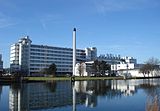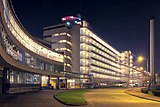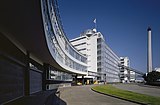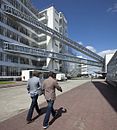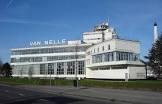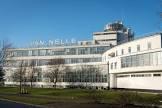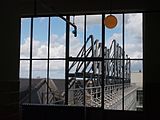The Van Nellefabriek factory was designed and built in the 1920s, on the banks of a canal in the industrial area of Spaanse Polder, northwest of Rotterdam. One of the landmarks of 20th century industrial architecture, the factory consists of a factory complex with a facade made mainly of steel and glass, making extensive use of curtain wall principles. It was conceived as an "ideal factory", open to the outside world, with internal work spaces that evolved according to needs and took advantage of daylight to provide comfortable working conditions. It embodied a new type of factory, becoming a symbol of modernist and functionalist culture in the interwar period, and a testament to the Netherlands' long commercial and industrial history in the import and processing of food from tropical countries and their industrial processing for sale in Europe.
| official website |
http://www.vannellefabriek.com/en-us |
| native label |
Van Nellefabriek |
| area |
6.94 |
| World Heritage criteria |
Larousse Encyclopedia online |
| World Heritage criteria |
World Heritage selection criterion (ii) |
| nighttime view |
http://commons.wikimedia.org/wiki/Special:FilePath/VN5%20HDR2.jpg |
| category for the interior of the item |
Category:Interior of Van Nelle Factory (Rotterdam) |
| image |
http://commons.wikimedia.org/wiki/Special:FilePath/Rotterdam%20van%20nelle%20fabriek.jpg |
| architect |
cueva de la Feliceta |
| commissioned by |
Cees van der Leeuw |
| located in the administrative territorial entity |
Rotterdam |
| executive body |
Van Nelle Factory, Rotterdam |
| ground level 360 degree view |
http://commons.wikimedia.org/wiki/Special:FilePath/VN5%20HDR2.jpg |
| number of rooms |
viaf-311735337 |
| office held by head of the organization |
http://g.co/kg/m/06zs2r_ |
| location |
Spaanse Polder |
| start time |
2001-01-01T00:00:00Z |
| Commons category |
Van Nelle Factory, Rotterdam |
| inception |
1931-01-01T00:00:00Z |
| coordinate location |
Point(4.433611 51.922778) |
